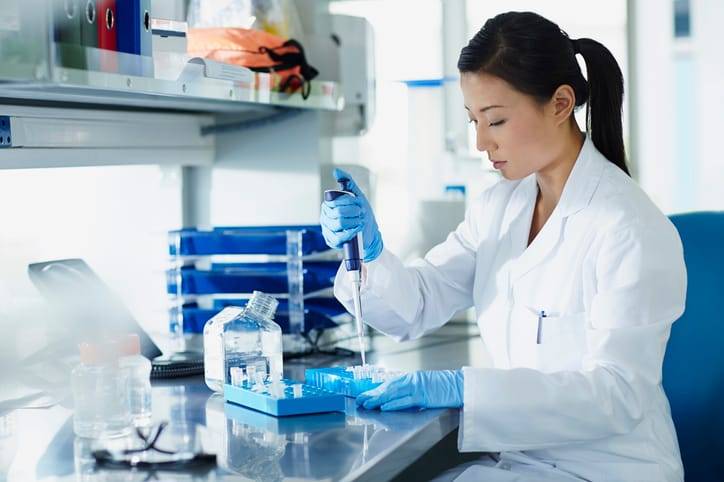Main Points In Hindi (मुख्य बातें – हिंदी में)
-
महामारी के प्रभाव: महामारी के कारण प्रयोगशाला निर्माण गतिविधि में वृद्धि हुई थी, विशेष रूप से कोविड-19 वैक्सीन और दवा अनुसंधान के लिए। अब, महामारी के समाप्ति के बाद, निर्माण गतिविधि में गिरावट आई है और लागत में 20% तक की बढ़ोतरी हुई है।
-
प्रयोगशाला स्पेस की कमी: प्रमुख अमेरिकी जीवन विज्ञान बाजारों में प्रयोगशाला स्थान की आपूर्ति दर्जनों में बढ़ गई है। बोस्टन-कैम्ब्रिज, सैन फ्रांसिस्को खाड़ी क्षेत्र और सैन डिएगो में रिक्तता रिकॉर्ड ऊंचाई पर पहुंच गई है, जो भवन मालिकों के लिए चुनौती है।
-
रूपांतरण गतिविधि में गिरावट: प्रयोगशालाओं का अन्य उपयोगों के लिए रूपांतरण, विशेषकर कार्यालयों में, घटकर 20% रह गया है, जो 2022 की शुरुआत में 35% के शिखर से कम है। स्कॉरिंग का कारण व्यापारों को नई जगहों पर अधिक विकल्प मिलना है।
-
किरायेदार-सुधार भत्तों में वृद्धि: भवन मालिकों ने किरायेदारों के लिए सुधार भत्तों में औसतन 38% की वृद्धि की है, जिसका मुख्य कारण किरायेदारों के लिए प्रतिस्पर्धा बढ़ना है। उच्च फिट-आउट लागत और विशिष्ट स्थान जैसे साफ़ कमरे की आवश्यकता इसमें योगदान कर रहे हैं।
- भविष्य की संभावनाएँ: सीबीआरई का अनुमान है कि प्रयोगशाला निर्माण गतिविधि 2026 तक महामारी-पूर्व स्तरों तक गिर जाएगी, और बाजार के मालिकों को खाली स्थानों को भरने में कई वर्षों की आवश्यकता होगी।
Main Points In English(मुख्य बातें – अंग्रेज़ी में)
Here are the main points from the provided text:
-
Laboratory Construction Costs: Laboratory construction is becoming increasingly expensive, with costs rising by at least 20% due to inflation, rising material costs, and longer lead times for specialized equipment. It is anticipated that laboratory construction activity will return to pre-pandemic levels by 2026.
-
Impact of the Pandemic: There was a surge in laboratory construction during the pandemic, largely driven by investments in COVID-19 drug and vaccine research. However, post-pandemic, there has been a significant decline in construction activity compared to its peak during the pandemic.
-
Vacancy Rates in Key Markets: Major life sciences markets, including Boston-Cambridge, the San Francisco Bay Area, and San Diego, are experiencing record-high vacancy rates, with the Bay Area facing the most negative absorption rates. It is projected that it will take years for these markets to absorb the excess laboratory space.
-
Conversions and Tenant Improvement Allowances: The conversion of laboratories for other uses, primarily to office space, has decreased significantly from 35% at its peak in early 2022 to just 20% by the second quarter of 2024. Additionally, tenant improvement allowances have increased by an average of 38% since 2021 as landlords compete for tenants.
- High Cost of Fit-Outs: There is a continued trend of high fit-out costs reflecting the specific needs of the life sciences sector, including the construction of specialized spaces like clean rooms. Costs for specialized equipment have risen by 30% to 50% compared to pre-pandemic levels.


Complete News In Hindi(पूरी खबर – हिंदी में)
प्रयोगशालाएँ बनाना अधिक महंगा होता जा रहा है और महामारी के दौरान चरम गतिविधि की तुलना में निर्माण कार्य में गिरावट आई है। लेकिन प्रयोगशाला में अभी भी काफी जगह बची हुई है, जिससे भवन मालिकों को इसे भरने के लिए संघर्ष करना पड़ रहा है। नई रिपोर्ट इस सप्ताह वाणिज्यिक रियल एस्टेट और निवेश फर्म सीबीआरई से।
महामारी के कारण प्रयोगशाला निर्माण गतिविधि में उछाल आया, जिससे जीवन विज्ञान स्टार्टअप में किए गए निवेश में वृद्धि हुई। ज़्यादातर नहीं बल्कि पूरी गतिविधि कोविड-19 दवा और वैक्सीन अनुसंधान एवं विकास से संबंधित थी। रिपोर्ट में विश्लेषण किए गए शीर्ष 13 अमेरिकी जीवन विज्ञान बाजारों में, सीबीआरई ने पाया कि 2023 की दूसरी तिमाही में निर्माणाधीन लगभग 40 मिलियन वर्ग फुट पर गतिविधि चरम पर थी।
अब परिस्थितियां अलग हैं. महामारी के अंत के कारण गतिविधि में मंदी आ गई। इस बीच, प्रयोगशाला-निर्माण लागत में कम से कम 20% की वृद्धि हुई है, जिसका कारण सीबीआरई मुद्रास्फीति, सामग्रियों की बढ़ती लागत और कुछ विशेष उपकरणों के लिए लंबे समय तक काम करना बताता है। सीबीआरई का अनुमान है कि प्रगतिरत प्रयोगशाला निर्माण 2026 तक महामारी-पूर्व स्तर तक गिर जाएगा।
शीर्ष तीन जीवन विज्ञान बाज़ार – बोस्टन-कैम्ब्रिज, सैन फ्रांसिस्को खाड़ी क्षेत्र और सैन डिएगो – में प्रयोगशाला स्थान की सबसे अधिक आपूर्ति है। इस वर्ष की दूसरी तिमाही में उन बाजारों में रिक्तियां रिकॉर्ड ऊंचाई पर पहुंच गईं। सीबीआरई ने कहा कि इन तीन शीर्ष बाजारों को प्रयोगशाला स्थान की अधिक आपूर्ति को अवशोषित करने में कई वर्षों की आवश्यकता होगी।
खाड़ी क्षेत्र नकारात्मक शुद्ध अवशोषण से सबसे अधिक प्रभावित हुआ है, जिसका अर्थ है कि पट्टे पर दी जाने वाली प्रयोगशाला की तुलना में अधिक जगह खाली होती जा रही है। पिछले 12 महीनों में, इस बाजार में नकारात्मक शुद्ध अवशोषण लगभग 2 मिलियन वर्ग फुट तक पहुंच गया। हालाँकि, सीबीआरई का कहना है कि बे एरिया को क्लीनटेक जैसे अन्य उद्योगों के लिए खाली प्रयोगशाला स्थान का विपणन करने में सक्षम होने का लाभ है।
रिपोर्ट में कहा गया है कि विश्लेषण किए गए सभी बाजारों में, अन्य उपयोगों के लिए प्रयोगशालाओं के रूपांतरण, ज्यादातर कार्यालय स्थान में गिरावट आई है। निर्माणाधीन वर्ग फुट के प्रतिशत के रूप में, 2024 की दूसरी तिमाही में ये रूपांतरण घटकर 20% रह गए, जो 2022 की शुरुआत में 35% के शिखर से कम है। सीबीआरई का कहना है कि रूपांतरण गतिविधि में गिरावट आई क्योंकि व्यवसायों को नई, बिना पट्टे वाली जगह के साथ अधिक विकल्प मिलने लगे। ऑनलाइन। इस बीच, सैन डिएगो और न्यू जर्सी ने पिछले पांच वर्षों में निर्माणाधीन आपूर्ति की मात्रा में सबसे अधिक प्रतिशत वृद्धि दर्ज की है। लेकिन सीबीआरई ने कहा कि इन बाजारों में निर्माण अभी भी इतना कम है कि अधिक आपूर्ति की चिंता से बचा जा सके।
सीबीआरई रिपोर्ट में किरायेदार-सुधार भत्ते में भी वृद्धि देखी गई है, जो वह धन है जो भवन मालिक किरायेदारों को पट्टे पर दी गई जगह के इंटीरियर को बनाने और अनुकूलित करने के लिए प्रदान करते हैं। शीर्ष आठ बाजारों में, सीबीआरई ने कहा कि 2021 के बाद से इन भत्तों में औसतन 38% की वृद्धि हुई है। सीबीआरई ने कहा कि ये भत्ते आम तौर पर तब बढ़ते हैं जब भवन मालिकों को किरायेदारों पर हस्ताक्षर करने के लिए अधिक प्रतिस्पर्धा का सामना करना पड़ता है। फिट-आउट लागत, किसी विशेष आवश्यकता को पूरा करने के लिए जगह के डिजाइन और निर्माण के खर्च बढ़ रहे हैं। अत्यधिक विशिष्ट स्थान जैसे मछलीघर और साफ़ कमरे बनाने में अधिक लागत आती है। रिपोर्ट में कहा गया है कि कुछ उच्च लागत विशेष उपकरणों से आती है, जिनकी कीमतें महामारी-पूर्व स्तरों की तुलना में 30% से 50% अधिक हैं।
सीबीआरई अमेरिका के जीवन विज्ञान नेता मैट गार्डनर ने एक तैयार बयान में कहा, “लैब मालिक विकास के लिए 2021 से पहले के दृष्टिकोण पर लौट रहे हैं, जो इस अहसास को दर्शाता है कि अस्थायी शिखर एक विपथन था, कोई नई सामान्य बात नहीं।” “हम फिट आउट की उच्च लागत को देखना जारी रखते हैं जो जीवन विज्ञान क्षेत्र की अत्यधिक विशिष्ट प्रकृति को दर्शाता है।”
फोटो: मोर्सा इमेजेज, गेटी इमेजेज
Complete News In English(पूरी खबर – अंग्रेज़ी में)
Building laboratories is becoming increasingly expensive, and there has been a decline in construction activity compared to the peak during the pandemic. However, there is still a lot of vacant space in laboratories, making it challenging for property owners to fill those gaps. A new report from the commercial real estate and investment firm CBRE highlights these issues this week.
The pandemic initially led to a surge in laboratory construction which boosted investments in life sciences startups, primarily focused on developing COVID-19 medications and vaccines. In the top 13 U.S. life sciences markets analyzed in the report, CBRE found that construction activity peaked at nearly 40 million square feet in the second quarter of 2023.
Now, however, the situation has changed. As the pandemic has ended, there has been a slowdown in activity. Additionally, the cost of building laboratories has increased by at least 20% due to inflation, rising material costs, and lengthy lead times for certain specialized equipment. CBRE predicts that laboratory construction will return to pre-pandemic levels by 2026.
The top three life sciences markets—Boston-Cambridge, the San Francisco Bay Area, and San Diego—have the highest supply of laboratory space. In the second quarter of this year, vacancies in these markets reached record highs. CBRE stated that these three markets will take several years to absorb the excess laboratory space.
The Bay Area has been most affected by negative net absorption, meaning more lab space is becoming vacant than is being leased. Over the past 12 months, negative net absorption in this market has reached nearly 2 million square feet. However, CBRE notes that the Bay Area has the advantage of marketing vacant lab space to other industries like cleantech.
The report also indicates that conversions of laboratories for other uses, mostly into office spaces, have decreased across all analyzed markets. As a percentage of the total square footage under construction, these conversions dropped to 20% in the second quarter of 2024, down from a peak of 35% at the beginning of 2022. CBRE explains that the drop in conversion activity comes from businesses encountering more options for new, lease-free spaces online. Meanwhile, San Diego and New Jersey have recorded the highest percentage growth in construction supply over the past five years. However, CBRE says that construction in these markets is still low enough to avoid concerns about oversupply.
Additionally, the CBRE report noted an increase in tenant improvement allowances, which is the money that property owners provide to help tenants build and customize the interiors of leased spaces. In the top eight markets, these allowances have risen by an average of 38% since 2021. CBRE explains that such allowances usually increase when property owners face more competition to sign tenants. The costs for fit-outs, which involve designing and constructing space to meet specific needs, are on the rise. Building highly specialized spaces like laboratories and clean rooms is particularly expensive. The report indicates that some of these high costs stem from specialized equipment that is now priced 30% to 50% higher than pre-pandemic levels.
Matt Gardner, CBRE’s leader for life sciences in the U.S., stated, “Lab owners are returning to pre-2021 thinking for growth, recognizing that the temporary peak was a disruption, not a new norm.” He added, “We continue to see high fit-out costs reflecting the highly specialized nature of the life sciences sector.”
Photo: Morsa Images, Getty Images




